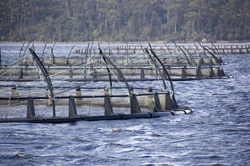Netting fugitive fish
Conventional techniques used in aquaculture, or fish farming, were initially developed for the farming of salmon and do not always work as well with other species. For example, sea bass, sea bream and cod are more curious and aggressive with a net than salmon and tend to bite, suck and snatch on loose rope ends. This can damage fish farm equipment and lead to fish escaping into the open sea. This not only results in economic loss for fish farmers, many of which are small and medium-sized enterprises (SMEs), but can also pose an ecological and health threat to wild fish stocks through potential disease transfer and genetic contamination. The EU-funded ‘Escapees in European aquaculture development of an escape proof net especially for cod, bass and bream fish farming’ (Escapeproofnet) project designed a sea cage net system geared specifically towards these more aggressive farmed fish species. The resulting net is composed of a cost-effective and tough polyolefin (a kind of polymer) filament which possesses anti-bite and anti-fouling properties. The project also adapted existing net manufacturing techniques to make the most of the new material in terms of configuration, strength and durability. Various weaving options were tested against the behaviour of the target species to identify the optimal technique. In addition, Escapeproofnet developed an integrated methodology for a single net system which reduces breakouts by 50 % compared with conventional cages. Owing to unavoidable delays, the project was unable to construct and evaluate a full-scale prototype. This meant that validation was carried out on scaled-down framed net samples which were attached to existing cages and evaluated for biting and fouling resistance. Escapeproofnet disseminated its promising findings and best practice for net maintenance to SMEs and other relevant stakeholders.







